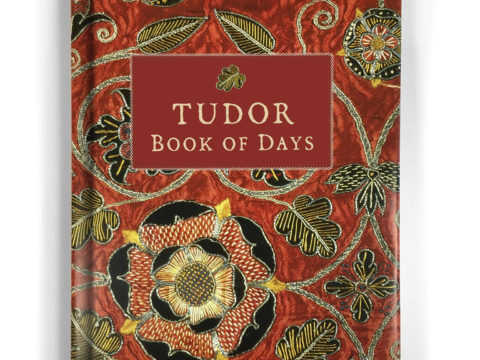Elizabeth I: Life Story
Chapter 2 : Branded Illegitimate
Henry and Anne’s relationship had always been volatile, and it appears that Anne found it hard to make the transition from courtly mistress commanding an ardent lover, to wife and queen with pressure to produce an heir. (For more on this, it is worth reading Sarah Gristwood’s The Tudors in Love, reviewed here). Tales of their quarrels and subsequent reconciliations raced around the courts of Europe. After Elizabeth’s birth, Anne had at least two more pregnancies, but in January 1536, she miscarried a male foetus. Since Katharine of Aragon had died, Henry was now in a position where, if he cast Anne off, he would not be obliged to return to Katharine. Although Katharine’s death had been celebrated by the royal couple with a party, where Elizabeth was carried about in her father’s arms, with all three dressed in yellow, within months, Anne had been arrested, accused of treason, and executed. Before her death, she was obliged to agree to an annulment of her marriage by Archbishop Thomas Cranmer – the grounds are uncertain, but probably Henry’s previous liaison with her sister, Mary Boleyn, was cited. Since both Henry and Anne had been aware of the impediment at the time of their marriage, there was no grounds for Elizabeth to remain legitimate as the offspring of a marriage that the individuals had thought to be lawful at the time it was entered into. She was now illegitimate, just like her half-sister, Mary, and her half-brother, Henry FitzRoy. They however, had the advantage of her – FitzRoy as a male, and Mary as older, and widely believed to be legitimate, with powerful foreign relatives.
Orders were sent to Hatfield for the cloths of estate and other marks of royal entitlement to be removed from Elizabeth’s chambers. Parliament passed a new Act of Succession, settling inheritance of the Crown on the children of Henry’s new wife, Jane Seymour. Elizabeth was to be referred to henceforward as Lady Elizabeth, rather than ‘princess’. Although Elizabeth was only two-and-a-half, apparently she noticed the change in respect paid to her, and questioned Lady Bryan about it. Lady Bryan had other worries than titles. She wrote to Cromwell that Elizabeth had outgrown all her clothes, and that no money had been allocated for new ones. Sir John Shelton was in similar difficulties over providing for the household at large, with no allowance paid for the purchase of supplies.
Before long, however, Lady Bryan was relieved of her duties, being needed to provide her services to the newest addition to the royal family – Henry’s much-desired son, Edward, born in October 1537. She was replaced as lady mistress by the woman who was to become the closest to a mother that Elizabeth ever knew – Katherine Champernowne, later Astley (or Ashley) after her marriage in around 1545 to a gentleman of the household, Sir John Astley, a Boleyn relative. It was Kat, as Elizabeth called her, who was responsible for Elizabeth’s early education – teaching her to write, and apparently, the groundings of Latin – although how the daughter of a Devonshire gentleman had come to learn Latin herself, in an age when few women were educated to that degree, is a mystery. More importantly, or so contemporaries would have thought in regard to a female, Elizabeth was schooled in etiquette and obedience to her father. In 1539, when one of her father’s councillors, Sir Thomas Wriothesley, visited Hunsdon, where Elizabeth was lodged with her half-sister, the little girl was presented to him to receive her father’s Christmas message. Wriothesley reported that she had enquired after her father’s health and welfare ‘with as great a gravity as she had been forty years old’.
This courtly education was at the fore in early 1540, when Elizabeth was summoned to London to take part in the celebrations that surrounded the arrival of her second stepmother, Anne of Cleves. Anne did not appeal to the king, and Elizabeth may have been surprised, and perhaps gratified, to find that within six months, she was to have a third stepmother, Katheryn Howard, who was first cousin to her own mother, Anne Boleyn. Katheryn was a generous young woman, and perhaps made a pet of her little cousin, who stayed at court with her in the spring of 1541. The queen gave Elizabeth various presents, including a rosary with ‘crosses, pillars and tassels attached’.
It has been speculated that the appalling shock of Katheryn’s execution for adultery when Elizabeth was eight years old so affected Elizabeth that the memory of it was at the root of her subsequent distaste for matrimony. Later, Robert Dudley, Earl of Leicester, claimed that she had declared at the time that she would never marry. If she did make such a declaration, it is highly unlikely that anyone paid any heed – as the daughter of a king, even if illegitimate, she would marry where her father commanded. During the late 1530s, several matches were proposed for her, but all foundered on her status – a foreign prince did not want an illegitimate wife.
The execution of his fifth wife, although it left Henry in a depressed state of self-pity, was not so upsetting as to present him with any scruples against marrying again, and in 1543, Elizabeth learnt she was to have yet another stepmother, Katherine Parr.
